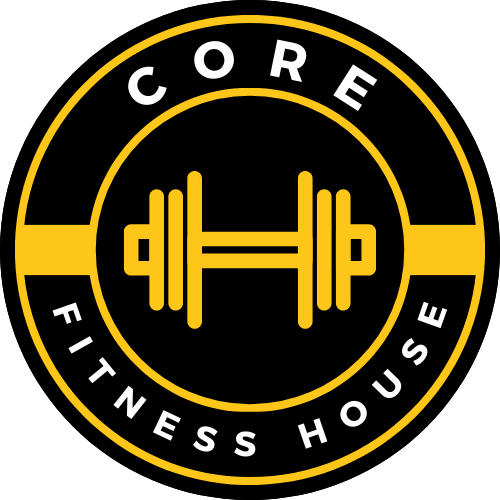If you’ve ever wondered whether you’ll burn more energy by lacing up for a jog or picking up a pair of dumbbells, you’re not alone. The short answer is: both cardio and strength training burn energy, just in different ways and on different timelines. The long answer? That’s where it gets interesting (and useful for your goals).
Here’s a friendly, science-backed guide to help you decide what to do today—and how to build a routine that keeps your energy burn high, your muscles happy, and your fitness sustainable.
How your body burns energy: during vs. after:
Cardio tends to burn more calories during the workout itself. Think steady-state activities like brisk walking, cycling, or rowing—your heart rate stays elevated for a while, and you use a lot of oxygen. That’s great for immediate energy burn.
Strength training often burns fewer calories per minute during the session compared to intense cardio, but it triggers a bigger afterburn effect (excess post-exercise oxygen consumption, or EPOC) and helps you add lean muscle. More lean muscle increases your resting metabolic rate, which means you burn more energy all day—even on couch days. Over weeks and months, that adds up.
So which is “better”? If you want maximum burn right now, cardio usually wins. If you want higher daily burn over time (and a stronger, more resilient body), strength training is the unsung hero. The best plan for most people blends both.
Cardio options that burn big (and feel good):
*Brisk treadmill walk or incline hike: Walking is low-impact and scalable. Try 30–45 minutes at a brisk pace, adding incline to boost burn without pounding your joints. A foldable treadmill is perfect for small spaces and easy storage.
*Indoor cycling intervals: Warm up for 5 minutes, then alternate 1 minute hard / 2 minutes easy for 10–12 rounds. Finish with a cooldown. Intervals increase calorie burn and cardio fitness. Explore some of our compact bikes and cycling options.
*Rowing for full-body cardio: Rowing works legs, back, and core while offering a serious heart-rate boost. Try 20–25 minutes at a moderate pace with 5 short sprints sprinkled in.
*Jump rope circuits: Five 1-minute rounds with 1 minute rest between rounds can rival a run for energy burn.
Strength training that keeps burning after you’re done:
*Dumbbell strength circuit: Do 3–4 rounds of 8–12 reps each: goblet squats, dumbbell rows, floor press, Romanian deadlifts, and overhead presses. Rest 60–90 seconds between sets. Adjustable dumbbells save space and allow you to swap weights fast.
*Kettlebell swings for power and afterburn: Do 10–15 swings on the minute for 10 minutes. Your heart rate will spike, and your posterior chain will thank you.
*Resistance band total-body: Try 3 sets of 12–15 reps: banded squats, band pull-aparts, banded push-ups, and banded face pulls.
*Compact home gym station: Superset pull-downs with seated rows, then leg extensions with leg curls, and finish with cable wood chops.
What about HIIT?
High-intensity interval training (HIIT) blends cardio and strength elements and can deliver a big calorie burn in a short time. Think rowing sprints, bike intervals, kettlebell complexes, or bodyweight circuits. A quick protocol: 60 seconds all-out, 30 seconds easy (or rest) x 8–10 rounds. Use a treadmill, bike, rower, or kettlebell—whatever you have and can do safely.
If your goal is weight loss, combine both.
For efficient fat loss and total energy burn, pair 3 days of strength training with 2–3 days of cardio. Strength preserves (and can build) muscle while you’re in a caloric deficit, which keeps your metabolism more robust. Cardio adds volume to your energy expenditure without beating up your joints when programmed smartly.
Sample weekly plan:
*Monday: Strength circuit (full body) with adjustable dumbbells, 45 minutes.
*Tuesday: Incline treadmill walk, 35–45 minutes at moderate intensity.
*Wednesday: Mobility + resistance bands (lighter day), 25–30 minutes.
*Thursday: Rowing intervals, 20–25 minutes (1 minute hard, 2 minutes easy).
*Friday: Strength day (kettlebell swings + dumbbell lifts), 40 minutes.
*Weekend: Optional easy walk, hike, or bike ride outdoors. Bonus for sunshine and steps.
How to dial in intensity without burning out:
*For cardio: Aim for a mix of steady, conversational-pace sessions and shorter interval days. If you can chat in sentences, that’s moderate. If you can only get out a few words, that’s vigorous.
*For strength: Choose a weight that makes the last 2–3 reps feel challenging but doable with good form. Progress by adding a rep or a bit of weight each week.
*Recovery matters: Sleep, protein, and hydration all influence how much energy you can expend—and how much your body adapts. Aim for 7–9 hours of sleep, 0.7–1.0 grams of protein per pound of goal body weight (as tolerated), and steady water intake.
Common myths, cleared up:
*“Lifting makes you bulky.” Not unless you’re training and eating specifically for that. For most, strength training creates a lean, firm look and supports joint health.
*“Cardio kills gains.” Excessive, high-volume cardio can interfere with muscle building, but moderate cardio supports heart health, recovery, and fat loss. The combo is powerful.
*“You have to sweat buckets to burn calories.” Sweat is a cooling mechanism, not a calorie meter. Effort and consistency matter more than how drenched your shirt is.
If you want immediate energy burn, choose cardio today. If you want to boost your daily metabolism and reshape your body over time, lift today. If you want the best of both worlds—and most people do—combine them across the week. Train smart, keep it consistent, and choose equipment that makes it easy to show up. Your energy burn (and your future self) will thank you.

